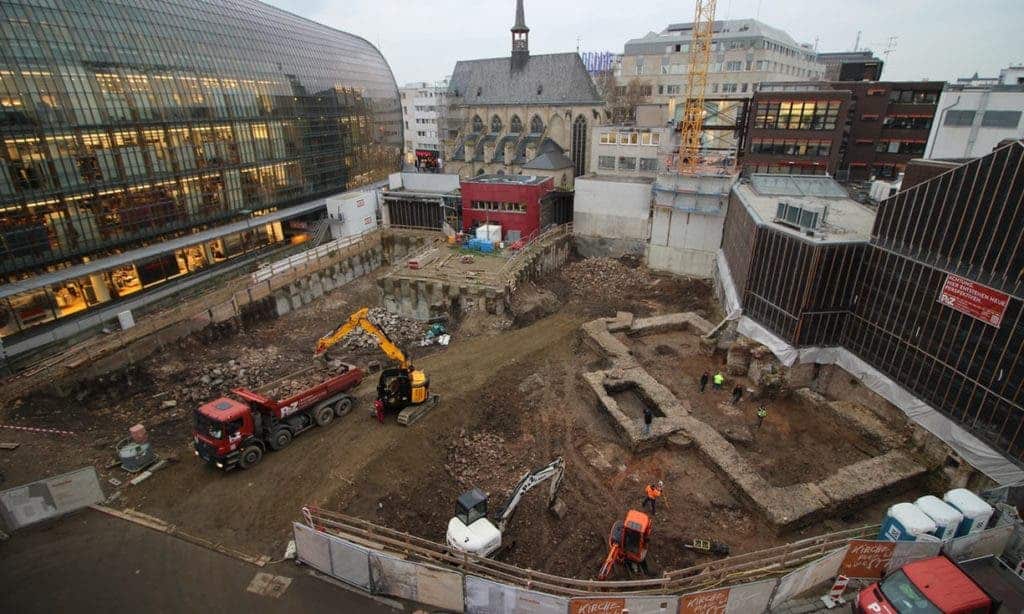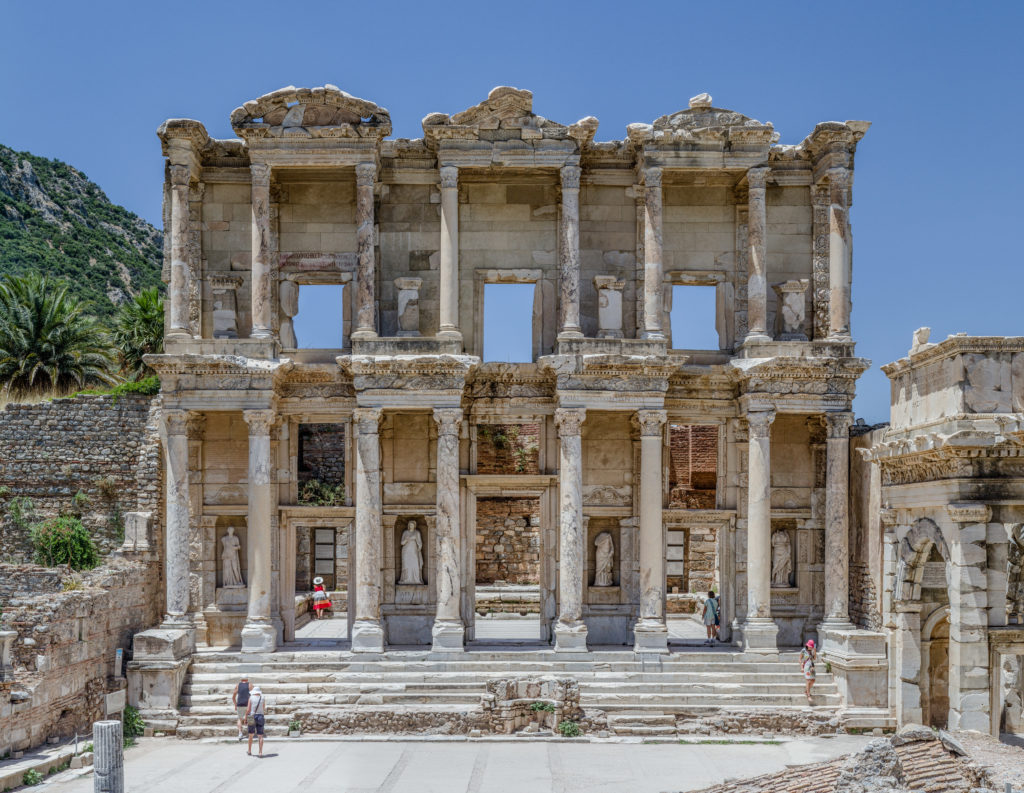The remains of an ancient library dating 1,800 years ago were unearthed in central Cologne. The library, which was built by the Romans, would have housed up to 20,000 scrolls.

The walls of the library were first discovered in 2017 during an excavation on the ground of a Protestant church –the Antoniter Church — in what is now a modern shopping area in the city of Cologne. The rest of the library was discovered after additional excavation work on the grounds.
Initially, the find was surprising. Not because of its age — Cologne is actually one of Germany’s oldest cities, and was founded in 50 AD under the name of Colonia — but rather because the structure of the library was unusual.
“It took us some time to match up the parallels – we could see the niches were too small to bear statues inside. But what they are are kind of cupboards for the scrolls,” said Dr Dirk Schmitz from the Roman-Germanic Museum of Cologne. “They are very particular to libraries – you can see the same ones in the library at Ephesus.”
It’s not clear how many scrolls the library would have contained, but Schmitz believes the number could have been around 20,000. This would make it slightly smaller but still on par with that of Ephesus — one of the most impressive archaeological finds.

The building was likely two stories tall, measuring 20 by 9 meters, and featuring an extension which was added at a later date. Archaeologists praise it as the oldest library ever found in Germany.
“It dates from the middle of the second century and is at a minimum the earliest library in Germany, and perhaps in the north-west Roman provinces,” he said. “Perhaps there are a lot of Roman towns that have libraries, but they haven’t been excavated. If we had just found the foundations, we wouldn’t have known it was a library. It was because it had walls, with the niches, that we could tell.”
What will happen to the library
According to builders, the archaeological remains will be integrated into the new church building, with some of them remaining available for visitation. Other parts of the structure will be preserved for future archaeologists to study.
Cologne is mostly known for its impressive gothic architecture, but the city also boasts a Roman history and is riddled with Roman structures like walls and aqueducts. More delicate structures like villas and mosaics have also been found in the city.
Cologne was first described as a military settlement in the year 38 BC. It has since grown and flourished, being given colony status by Emperor Claudius. Today, it is the fourth most populated city in Germany and a thriving urban settlement.


